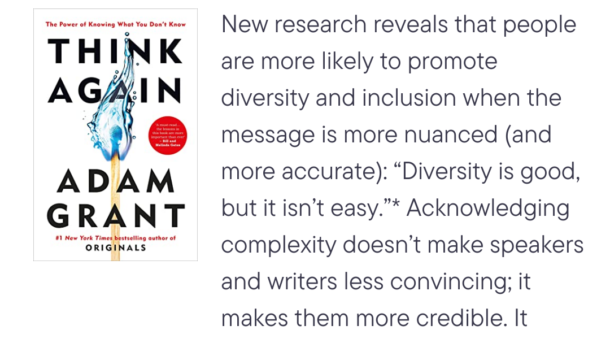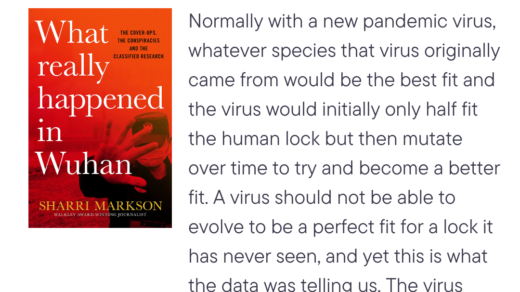We can also convey complexity by highlighting contingencies. Every empirical finding raises unanswered questions about when and where results will be replicated, nullified, or reversed. Contingencies are all the places and populations where an effect may change. Consider diversity: although headlines often say “Diversity is good,” the evidence is full of contingencies. Although diversity of background and thought has the potential to help groups think more broadly and process information more deeply, that potential is realized in some situations but not others. New research reveals that people are more likely to promote diversity and inclusion when the message is more nuanced (and more accurate): “Diversity is good, but it isn’t easy.”* Acknowledging complexity doesn’t make speakers and writers less convincing; it makes them more credible. It doesn’t lose viewers and readers; it maintains their engagement while stoking their curiosity. In social science, rather than cherry-picking information to fit our existing narratives, we’re trained to ask whether we should rethink and revise those narratives. When we find evidence that doesn’t fit neatly into our belief systems, we’re expected to share it anyway.* In some of my past writing for the public, though, I regret not having done enough to emphasize areas where evidence was incomplete or conflicting. I sometimes shied away from discussing mixed results because I didn’t want to leave readers confused. Research suggests that many writers fall into the same trap, caught up in trying to “maintain a consistent narrative rather than an accurate record.”
Its a fine balance between trying to deliver a simple, consistent narrative versus acknowledging complexity to make it more palatable for people whom might be opposed to your views. On one hand, simplifying matters to drive your narrative clearly, and not mentioning any of the contingencies seem to work better in getting people interested in your work. After all, it is very natural for people to try to find narratives that conform to what they think. I generally find that for many of the content creators out there, being nuanced is probably not the best way to garner initial eyeballs and attention to your product.
On the other hand, it does help with convincing people whom might already be opposed to your central idea if you could acknowledge contingencies and provide a much more accurate message. So if its not a popularity contest where you are trying to garner views or likes, and more of you having to genuinely to convince someone at say a work setting. You could try acknowledging ways that your proposal could fail while still driving your overall principle or point across. It addresses some of the concerns the other party might have, but also could help you form a more complete opinion that might actually help you execute your plan better.



